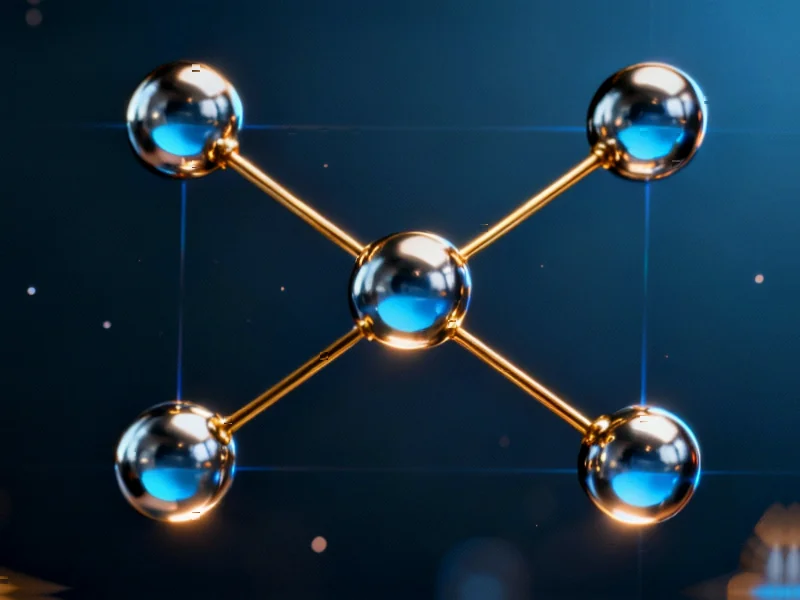The Quantum Sampling Challenge
In the rapidly evolving field of computational science, Gaussian Boson Sampling (GBS) has emerged as a promising quantum computing approach that could potentially outperform classical systems. This quantum model utilizes squeezed light states passing through interferometers to solve sampling problems that are computationally challenging for traditional computers. The mathematical foundation of GBS relies on calculating matrix functions called Hafnians, which are closely related to counting perfect matchings in graph theory. While quantum systems have shown early promise in this domain, recent research reveals that classical algorithms might be more competitive than previously thought.
Table of Contents
Understanding the Mathematical Foundation
The core mathematical challenge in GBS involves calculating probabilities proportional to the square of Hafnians of adjacency matrices. For an unweighted graph, the Hafnian of its adjacency matrix equals the number of perfect matchings – sets of edges where every vertex is connected to exactly one other vertex without overlaps. This connection creates a bridge between quantum sampling problems and classical graph theory, opening avenues for classical algorithm development.
What makes this particularly significant is that while calculating permanents and Hafnians for general complex matrices is #P-hard (extremely computationally difficult), matrices with non-negative entries admit probabilistic polynomial-time approximation. This mathematical distinction suggests that certain practical applications of GBS might be more classically tractable than the general case, especially for problems involving non-negative weighted graphs., according to market analysis
Classical Sampling Through Markov Chain Methods
Researchers have developed sophisticated classical sampling algorithms based on Glauber dynamics, a well-established Markov Chain Monte Carlo (MCMC) technique. In the context of graph matching problems, this approach operates across the space of all possible matchings of a graph, known in statistical physics as the monomer-dimer model. The algorithm works by iteratively modifying matchings through random edge additions and removals, carefully calibrated to converge to the desired probability distribution., according to industry news
The standard Glauber dynamics for matchings follows these key steps:, according to technology insights
- Start with an initial matching (possibly empty)
- Randomly select an edge from the graph
- If adding the edge maintains a valid matching, add it with calculated probability
- If the edge is already in the matching, consider removing it with appropriate probability
- Repeat until convergence to the stationary distribution
Innovative Double-Loop Algorithm
The breakthrough comes from an enhanced approach called double-loop Glauber dynamics, which directly samples from distributions matching GBS outputs. This novel algorithm introduces modified transition probabilities for edge removal, dynamically determined through an auxiliary inner Markov chain. The inner chain samples perfect matchings from subgraphs induced by the current matching at each step of the outer Glauber dynamics., according to industry experts
This sophisticated approach ensures convergence to distributions where vertex sets are sampled with probability proportional to the square of their Hafnians, exactly mimicking the output distribution of Gaussian Boson Sampling experiments. The algorithm maintains polynomial mixing time for dense graphs, meaning it remains computationally feasible even for large problem instances.
Practical Implications and Applications
The development of efficient classical sampling algorithms for GBS distributions has significant implications across multiple domains. In optimization problems, these techniques can address challenges like the densest k-subgraph problem and maximum Hafnian calculations, which have applications in network analysis, pattern recognition, and computational chemistry.
For industrial computing applications, this research demonstrates that classical approaches remain competitive for specific problem classes previously thought to require quantum advantage. The quadratic dependence on Hafnians in GBS distributions naturally amplifies probability mass on vertex sets with numerous perfect matchings, potentially yielding favorable solutions to combinatorial optimization problems that arise in logistics, scheduling, and resource allocation.
Future Research Directions
While the current results show promise for unweighted graphs, ongoing research focuses on extending these classical sampling methods to weighted graphs and more complex graph structures. The mathematical framework established through this work provides a foundation for developing increasingly sophisticated classical algorithms that can tackle problems across the quantum-classical boundary., as related article
The convergence between quantum-inspired algorithms and classical computational methods continues to yield surprising insights, suggesting that the future of computational advantage may lie in hybrid approaches that leverage the strengths of both paradigms. As classical algorithms become more sophisticated and quantum hardware continues to develop, the boundary between classical and quantum advantage remains dynamic and fertile ground for innovation.
Related Articles You May Find Interesting
- Unlikely Alliance Forms as Tech Leaders and Cultural Icons Demand AI Superintell
- The AI Regulation Debate Turns Personal: Hoffman vs. Sacks Clash Reveals Deeper
- Tianlong’s $13M Automated LPG Cylinder Plant Boosts South African Energy Manufac
- Reinventing Encryption: How Next-Gen Affine Ciphers Are Strengthening Digital Se
- South Africa’s Energy Revolution: How Eskom is Removing Barriers to Grid Integra
This article aggregates information from publicly available sources. All trademarks and copyrights belong to their respective owners.
Note: Featured image is for illustrative purposes only and does not represent any specific product, service, or entity mentioned in this article.



